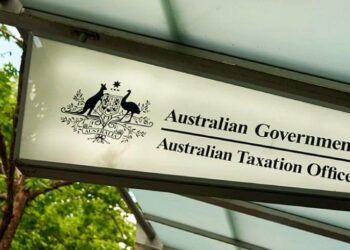The costs quoted by ASIC in its fact sheet “Self-managed superannuation funds: Are they for you?”, which was distributed to all new trustees in a pilot program in November last year, have been widely decried by industry stakeholders, who said the average running costs are closer to a range of between $1,500 and $5,000 per year.
In analysing data obtained from the corporate regulator that was used in its calculations when coming to the $13,900 figure, BGL uncovered that just 8.7 per cent of the costs quoted came from administration, while the remainder were mostly attributable to other expenses such as insurance that were not common among most SMSFs.
“We are not disputing the data itself, we just think the way the data has been presented is misleading,” BGL managing director Ron Lesh said.
“Our analysis has ascertained that ASIC’s calculation of the average cost of running an SMSF includes Australian and overseas interest, insurance premiums, forestry managed scheme expenses, investment expenses and something called ‘Other Amounts’. These expenses only apply to a very small number of SMSFs.
“These amounts contribute to 91.3 per cent of the SMSF costs. The average administration cost, after the removal of all these items, becomes just $1,205. Even if investment expenses are included, the average amount becomes $3,348. This is a far cry from ASIC’s headline amount of $13 886.”
Mr Lesh said the software provider had used ASIC’s cost model to calculate average annual running costs across its SMSF clients and had come up with a significantly lower figure, and this was lower still when a median figure was used, indicating large balance funds may distort the data.
“BGL has done an extensive analysis of the 190,000-plus funds on the Simple Fund 360 platform. We have done this calculation exactly the same way ASIC did their calculations. Our calculation shows an average cost of $5,720, and when you take the median cost rather than an average cost of running an SMSF, it is $3,718,” he said.
“BGL has no problem with ASIC and the ATO releasing data, but we think that data needs to be properly explained and needs to represent the real costs in the industry. It would appear whoever wrote the ASIC flyer has an anti-SMSF agenda and created the flyer to be misleading, and for new SMSF trustees, simply scary.”



Well done Mr Lesh , the only one sticking up for freedom of the individual. One thing that ASIC does not mention is the sneaky tricks that the industry and other funds play in consumers eg we provide you with life cover and after 3 months you can choose to stop it, or this insurance is compulsory . The probs is you only receive a statement one per annum or an email per annum and it is set and forget. Further the impact of Robo advise – with the large providers such bank, union funds you receive a computer generated letter that gives you a short period of time to change your super. It just gets left behind or forgotten. Take a look at how these organisations treat insurance – set and forget. There is no contact by them to you to discuss if the policy is applicable or not. It becomes out of sight and out of mind. Further if you have ever dealt with these people over the phone or counter they do not understand what they are doing or the laws of super and insurance.
The FASEA imbroglio is a successful strategy to get accountants out of super – we know what the laws are better than any other body. It is dumbing down of advise to the public as they become hostage to the big players.
People need personal tailored advise. Its not rocket science but maths is difficult and the people under 50 can not do basic arthmetic eg add, subtract, multiply and divide. How are they meant to work put how much should I put away in my retirement when I need $55k a year to live,.
I also think there are some misleading numbers in the audit fees as some accountants on bill clients and juice that up and report it higher than it actually is on the tax return, plus a lot of accountants who do it in house in my opinion apportion too much of the fee pie to the audit.
David, it is so refreshing to see something other than an “Anonymous” comment. I wholeheartedly agree with your sentiments. I handle the preparation of financial statements and tax returns for 90 funds and the “average” fee of all (some very large funds some not so) would be around $2,500 plus GST.
It was clearly wrong. Our costs are about $6,000 for a fund of about $1.5 million invested in shares. By the way, if they care so much, how about abolishing admin nightmares such as transfer balance caps?
A lack of expertise is one issue, and an important one. The inability to acknowledge it is an even bigger issue. ASIC expects financial services businesses to acknowledge their errors, and rightly so. However, why doesn’t ASIC hold itself to the same standard? In ASIC’s leaders not acknowledging their errors, what example does this set for their employees? What culture does this create within ASIC? Who is ASIC Accountable too?
well done Ron, This alone has created a lot of concern for trustees and enquiry and in every case we have handled so far, annual costs have been between $1800 to $3600. Just a mere $10000 less or 74% less than reported by the regulator. Its was very pointed and very misleading.
There is a common theme here. ASIC does not have the necessary expertise to come to an informed view on these SMSF matters. This is consistent with ASIC’s hopeless mismanagement of regulating financial planning. The cause is the same – a demonstrable lack of expertise. And seemingly, no appetite to admit it, or resolve it.